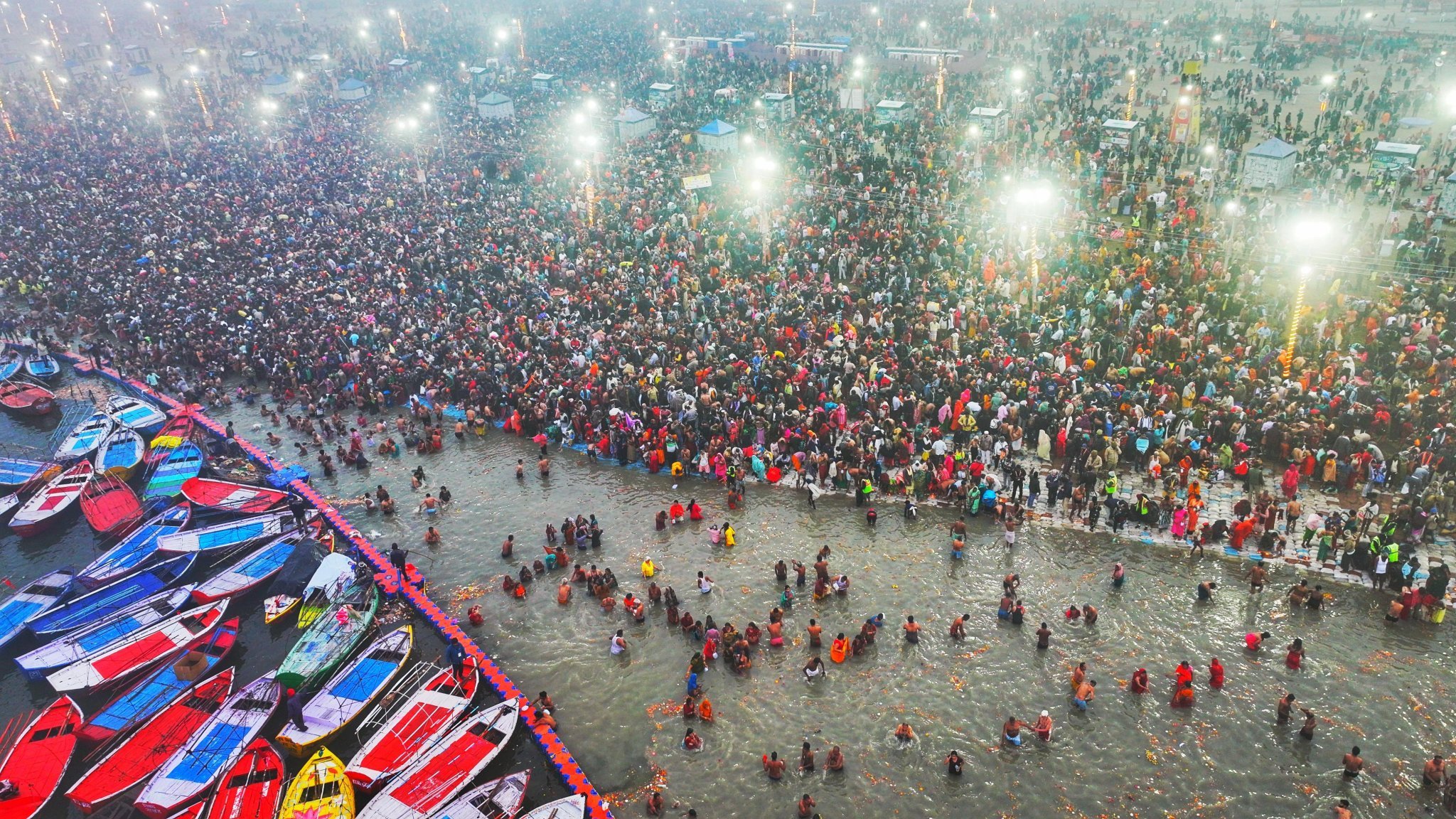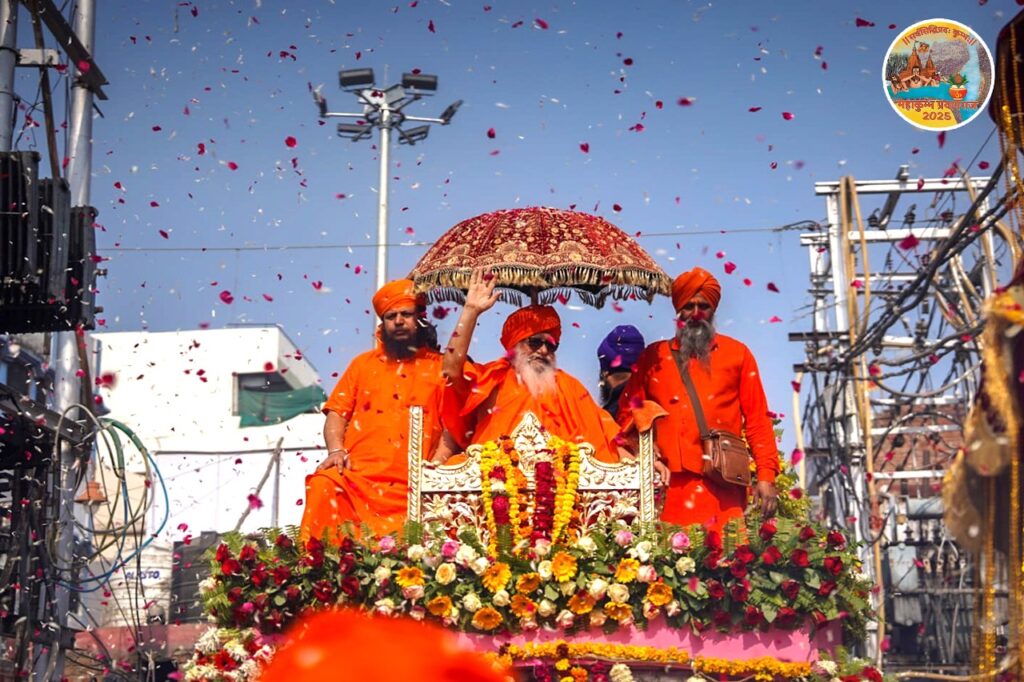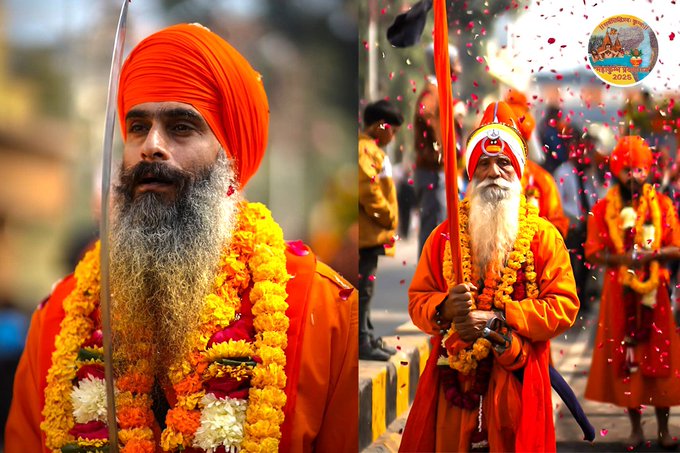Introduction
The Mahakumbh, one of the largest religious gatherings in the world, is set to take place in 2025. Millions of devotees from across the globe will converge at Prayagraj (formerly Allahabad) to take a holy dip in the sacred rivers. This article will guide you through the important Mahakumbh 2025 dates, rituals, and tips for visitors.
The Mahakumbh 2025 begins in January and lasts for several weeks. Here are the significant bathing dates:
- Makar Sankranti (January 14, 2025) – The first major bathing day, marking the official start of the Mahakumbh.
- Paush Purnima (January 25, 2025) – A significant full-moon day for rituals.
- Mauni Amavasya (February 9, 2025) – The most auspicious day for a holy dip, attracting the largest crowds.
- Basant Panchami (February 12, 2025) – Known for the vibrant celebration of the spring season.
- Maghi Purnima (February 23, 2025) – Another important full-moon bathing day.
- Maha Shivratri (March 10, 2025) – The concluding day, dedicated to Lord Shiva.
Significance of Mahakumbh
The Mahakumbh is deeply rooted in Hindu mythology. It commemorates the victory of gods over demons during the churning of the ocean (Samudra Manthan), where the nectar of immortality (Amrit) was spilled at four sacred sites, including Prayagraj.
Taking a holy dip in the Ganges during this period is believed to cleanse sins and lead to moksha (liberation).
Tips for Visitors
- Plan Ahead: With millions of people attending, book accommodations early. Options range from hotels to camps.
- Health Precautions: Carry essential medicines and stay hydrated.
- Respect Traditions: Follow guidelines during rituals and avoid littering.
- Transport: Special trains and buses will operate for the event. Check schedules in advance.
FAQs on Mahakumbh 2025
- Q: Where will the Mahakumbh 2025 be held?
A: It will be held in Prayagraj, Uttar Pradesh. - Q: How can I register for the event?
A: Online registration details will be available closer to the event date on the official Mahakumbh website.

Mahakumbh as the Largest Religious Gathering in the World
The Mahakumbh is not just a religious event; it is a phenomenon that transcends borders, uniting millions of devotees in a spectacular display of faith and spirituality. Recognized as the largest peaceful gathering of humanity in the world, it takes place every 12 years at Prayagraj (formerly Allahabad), one of the four sacred sites for the Kumbh Mela.
Scale and Participation
Mahakumbh attracts a staggering number of visitors, ranging from ordinary devotees to sadhus (holy men), ascetics, and international tourists. In previous Mahakumbh events, over 100 million people have gathered over several weeks, making it an unparalleled convergence of humanity.
- Devotees from Across the Globe: Pilgrims from all over India and other countries come to take a holy dip in the Triveni Sangam (the confluence of the Ganga, Yamuna, and the mystical Saraswati rivers).
- Significant Figures: Prominent saints, spiritual leaders, and celebrities often attend, adding to the grandeur of the event.
A Celebration of Faith and Unity
Mahakumbh is a testament to the power of belief and the enduring importance of tradition in the modern world. It is an event where individuals from diverse regions, languages, and socioeconomic backgrounds come together with a shared purpose: to seek spiritual cleansing and blessings. The gathering showcases the cultural and spiritual richness of India.
UNESCO Recognition
The cultural and spiritual significance of Kumbh Mela, including the Mahakumbh, has been recognized by UNESCO as an Intangible Cultural Heritage of Humanity. This recognition underlines its global importance and the unique role it plays in fostering a sense of community among attendees.
Why is it Considered the Largest Gathering?
- Duration: The Mahakumbh spans several weeks, allowing millions to visit over time.
- Accessibility: Special arrangements, including transport and infrastructure, are made to accommodate the massive influx of pilgrims.
- Ritual Importance: The specific bathing dates align with astrological calculations, drawing larger crowds on auspicious days like Mauni Amavasya and Makar Sankranti.
Global Attention
Mahakumbh has gained international recognition as a spiritual and cultural marvel. Documentaries, researchers, and journalists often highlight its scale, organization, and the profound faith it represents.
In essence, the Mahakumbh serves as a vivid reminder of humanity’s collective yearning for spiritual connection, making it an unparalleled event in the global religious landscape.
Top of Form
What is Mahakumbh?
Meaning of “Kumbh” and the Difference Between Kumbh, Ardh Kumbh, and Mahakumbh
The term “Kumbh” holds deep significance in Indian mythology and spirituality. It originates from the Sanskrit word “Kumbha,” meaning a pot or pitcher. This pot is a symbol of immortality and divine nectar (Amrit), which plays a central role in the mythological story behind the Kumbh Mela.
Mythological Background of Kumbh
The concept of Kumbh is rooted in the legend of the Samudra Manthan (churning of the ocean) described in Hindu scriptures. According to the myth:
- Gods and demons churned the ocean to obtain the nectar of immortality.
- Lord Vishnu, in the guise of Mohini, seized the pot containing the nectar to prevent it from falling into the hands of demons.
- During the chase, a few drops of nectar fell on four locations: Prayagraj, Haridwar, Ujjain, and Nashik.
- These locations became sacred sites where the Kumbh Mela is celebrated, as bathing in these waters during the Kumbh period is believed to purify the soul and grant liberation (moksha).
Difference Between Kumbh, Ardh Kumbh, and Mahakumbh
1. Kumbh Mela
- Frequency: Held every 3 years, rotating among the four sacred sites: Prayagraj, Haridwar, Nashik, and Ujjain.
- Significance: It is the general Kumbh gathering that commemorates the mythological event of the nectar falling on these locations.
2. Ardh Kumbh Mela
- Frequency: Held every 6 years at two specific locations: Prayagraj and Haridwar.
- Significance: The word “Ardh” means “half,” indicating it is held midway between two Mahakumbh Melas at the same site.
- Scale: While Ardh Kumbh attracts millions of pilgrims, it is smaller in scale compared to Mahakumbh.
3. Mahakumbh Mela
- Frequency: Held every 12 years at Prayagraj (formerly Allahabad).
- Significance: This is the grandest and most sacred of all Kumbh gatherings. It is believed to be the most spiritually potent, attracting tens of millions of devotees.
- Scale: The Mahakumbh is the largest religious gathering in the world, with preparations spanning years and involving massive organizational efforts.
Key Differences in Terms of Spiritual Importance
| Aspect | Kumbh Mela | Ardh Kumbh Mela | Mahakumbh Mela |
| Frequency | Every 3 years | Every 6 years | Every 12 years |
| Locations | 4 sites (Prayagraj, Haridwar, Nashik, Ujjain) | Prayagraj, Haridwar | Prayagraj only |
| Scale | Moderate | Large | Massive |
| Significance | Commemorates the fall of nectar at all four locations. | Midway event for heightened spiritual practices. | The most sacred and spiritually significant event. |
| Crowd Size | Millions | Tens of millions | Over 100 million |

Why is Mahakumbh Unique?
- Astrological Alignment: Mahakumbh is held when specific planetary positions (like the sun in Capricorn and Jupiter in Taurus) align, amplifying its spiritual significance.
- Global Attention: It draws not only Indian devotees but also foreign tourists, researchers, and media due to its immense scale and spiritual essence.
- Once in 12 Years: For many devotees, attending Mahakumbh is a once-in-a-lifetime opportunity.
History of the Kumbh Mela and Its Connection to the Legend of the Amrit Manthan
The origins of the Kumbh Mela are deeply rooted in ancient Indian mythology and spirituality, specifically the legend of the Samudra Manthan (churning of the ocean). This mythological story, found in Hindu scriptures like the Bhagavata Purana, Vishnu Purana, and Mahabharata, serves as the foundation for the celebration of Kumbh Mela. Let’s explore this legend and its historical evolution.
The Legend of Amrit Manthan (Churning of the Ocean)
According to Hindu mythology:
- The Problem of Mortality:
- The gods (Devas) and demons (Asuras) were mortal and desired immortality. They sought the nectar of immortality (Amrit), which was hidden in the depths of the cosmic ocean.
- The Pact Between Devas and Asuras:
- Both groups decided to cooperate in churning the ocean to obtain Amrit. They used Mount Mandara as the churning rod and the serpent Vasuki as the rope, with Lord Vishnu guiding the process.
- While the gods intended to use the nectar for their benefit, the demons were unaware of their plan.
- The Churning Process (Samudra Manthan):
- The ocean yielded several treasures and entities, including Lakshmi (the goddess of wealth), the wish-granting cow Kamadhenu, the moon, and poison (Halahala), which Lord Shiva consumed to save the world.
- Finally, the Amrit Kalash (pot of nectar) emerged.
- The Battle for the Nectar:
- As soon as the Amrit Kalash appeared, a fierce battle broke out between the Devas and Asuras.
- To protect the nectar, Lord Vishnu disguised himself as Mohini, a celestial enchantress, and tricked the demons into giving it to the gods.
- Nectar Falls on Earth:
- During the chaos, drops of Amrit spilled at four sacred locations:
- Prayagraj (Allahabad): The confluence of the Ganga, Yamuna, and Saraswati rivers.
- Haridwar: The banks of the Ganga River.
- Nashik: On the Godavari River.
- Ujjain: Along the Shipra River.
- These sites became sanctified, and it is believed that bathing in their waters during the Kumbh Mela washes away sins and grants spiritual liberation (moksha).
- During the chaos, drops of Amrit spilled at four sacred locations:
Historical Evolution of Kumbh Mela
- Ancient References:
- The earliest mentions of a congregation resembling the Kumbh Mela are found in ancient texts like the Rigveda, where rivers are celebrated as purifiers of sin.
- The Mahabharata also references pilgrimages to Prayagraj, highlighting the sanctity of the Triveni Sangam.
- Gupta Period (4th–6th Century CE):
- The formalization of Kumbh Mela is attributed to this period. Hindu rulers promoted pilgrimages to sacred rivers, aligning with astrological events.
- Adi Shankaracharya’s Influence:
- The 8th-century philosopher Adi Shankaracharya played a significant role in popularizing the Kumbh Mela as a spiritual gathering. He encouraged the congregation of saints and devotees at specific times for philosophical discussions and rituals.
- Medieval Period:
- The Kumbh Mela grew in scale during this time, with increased participation of sadhus (holy men) and various monastic orders (akharas).
- Historical accounts by foreign travelers, such as Hiuen Tsang in the 7th century, describe gatherings resembling Kumbh Mela.
- Modern Era:
- The British documented the grandeur of Kumbh Mela in the 19th century, highlighting its massive scale and organizational complexity.
- Over time, Kumbh Mela evolved into the world’s largest religious gathering, with millions of pilgrims attending for spiritual rejuvenation.
Significance of the Amrit Manthan Legend in Kumbh Mela
- The story symbolizes the eternal struggle between good and evil, with the nectar representing divine blessings and immortality.
- The event is seen as a way to re-enact the cosmic purification by taking a holy dip in the sacred rivers, believed to cleanse sins and bestow spiritual benefits.
- The astrological alignments that dictate the timing of the Kumbh Mela are said to reflect the positions of celestial bodies during the churning of the ocean.
The Global Appeal of Mahakumbh: Pilgrims, Saints, and International Visitors
The Mahakumbh Mela, held every 12 years, is not just a religious gathering; it is a global phenomenon that attracts millions of participants from across India and around the world. Its unparalleled scale and spiritual significance make it a magnet for pilgrims, saints, and international visitors, transcending geographical, cultural, and religious boundaries. Here’s an in-depth exploration of its global appeal.
1. Pilgrims: A Spiritual Homecoming
Devotees from India
- Faith-Driven Journey: Millions of Indian pilgrims travel from various corners of the country to bathe in the sacred rivers. They believe that the holy dip during Mahakumbh cleanses them of sins and grants spiritual liberation (moksha).
- Generational Practice: Many families consider attending Mahakumbh a once-in-a-lifetime event, passing down this tradition through generations.
- Mass Participation: Villagers, city dwellers, and people from diverse socio-economic backgrounds unite in faith, making the event a powerful cultural and spiritual experience.
Global Pilgrims
- Diaspora Participation: Indian communities from countries like the USA, UK, Canada, Australia, and the Middle East make the journey to reconnect with their roots and partake in the divine rituals.
- Special Travel Packages: Travel agencies worldwide offer pilgrimage packages, reflecting the event’s international demand.
2. Saints and Spiritual Leaders: Icons of Faith
Role of Saints in Mahakumbh
- Saints (Sadhus) and spiritual leaders play a pivotal role in the Mahakumbh. They are seen as custodians of ancient wisdom, guiding devotees toward spiritual enlightenment.
The Naga Sadhus
- Who They Are: These ascetic warriors, clad in ash and often naked, are one of the primary attractions of Mahakumbh. They are known for their rigorous discipline and renunciation of worldly possessions.
- First Holy Dip: Naga Sadhus lead the first ceremonial dip in the rivers, known as the Shahi Snan (Royal Bath), a highlight of the event.
Gathering of Akharas
- Spiritual Councils: The Mahakumbh serves as a rare occasion where various Hindu monastic orders (akharas) gather.
- Debates and Discussions: Philosophical debates, sermons, and discourses are held, drawing spiritual seekers from around the world.
Global Guru Connection
- Well-known spiritual leaders and gurus, like those from the Art of Living Foundation or ISKCON, often attend, attracting their international followers to experience the Mahakumbh firsthand.
3. International Visitors: Curiosity and Spiritual Exploration
Cultural Enthusiasts
- Witnessing the Largest Gathering: International visitors, including tourists, journalists, and researchers, come to observe the sheer magnitude of the event.
- Cultural Festivals: The vibrant rituals, colorful attire, and traditional music make Mahakumbh a spectacle of Indian culture.
Spiritual Seekers
- Many non-Hindu visitors are drawn to the spiritual energy of Mahakumbh. They attend to meditate, seek blessings, and learn about Indian philosophy and yoga.
Academic Interest
- Researchers and Scholars: Historians, sociologists, and anthropologists study the event as a living example of faith-based mass mobilization, ancient rituals, and cultural preservation.
- Media Attention: International media houses like the BBC, National Geographic, and The New York Times cover the Mahakumbh extensively, further boosting its global visibility.
Tourism Packages
- Luxury tent accommodations and guided tours for international tourists are a growing trend. These packages include spiritual activities, sightseeing, and cultural workshops.
4. Unique Factors Contributing to the Global Appeal
Scale and Organization
- The Mahakumbh is the largest gathering of humans in history, with attendance often exceeding 100 million people. The intricate organization and logistics behind this event fascinate international observers.
Astrological Significance
- The timing of Mahakumbh, determined by the alignment of celestial bodies, intrigues many who view it as a blend of science and spirituality.
UNESCO Recognition
- Kumbh Mela is recognized as Intangible Cultural Heritage by UNESCO, further cementing its status as a global event.
Pilgrimage as a Personal Transformation
- Visitors often report a profound sense of spiritual renewal and transformation after participating in Mahakumbh, making it an unforgettable experience.
5. Stories of Global Participation
- International Celebrities: Prominent figures like actors, writers, and spiritual leaders from abroad have attended the Mahakumbh to experience its divinity.
- Pilgrimage Stories: Many international pilgrims share personal anecdotes of finding peace, discovering purpose, or simply marveling at the unity in diversity that Mahakumbh represents.

Mahakumbh 2025: A Rare Occurrence After 144 Years
- The Mahakumbh Mela 2025 holds extraordinary significance as it will be the first Mahakumbh after a rare celestial alignment that occurs once in 144 years. This unique event amplifies the spiritual and astrological importance of the festival, making it a once-in-a-lifetime opportunity for pilgrims and spiritual seekers.
- 1. Why Mahakumbh 2025 is Special
- Understanding the Celestial Significance
- Planetary Alignment: The Mahakumbh is traditionally held based on specific alignments of Jupiter (Brihaspati), the Sun, and the Moon in the zodiac. In 2025, this alignment coincides with an astronomical cycle that last occurred 144 years ago.
- 144-Year Cycle: This cycle amplifies the spiritual potency of the holy dip in the Ganges, as per ancient Vedic and astrological texts. It is believed that the cosmic energies during this time are particularly strong, enhancing the benefits of the rituals performed.
- Spiritual Magnitude
- Enhanced Purification: Scriptures claim that bathing in the Ganges during such rare alignments not only cleanses sins but also bestows blessings that span multiple lifetimes.
- Astrological Importance: The convergence of cosmic energies during this Mahakumbh creates a unique spiritual atmosphere, attracting saints, seers, and astrologers worldwide.
- 2. Historical Context of the 144-Year Cycle
- The Last Such Event
- The last Mahakumbh under similar celestial conditions was held in 1881, drawing pilgrims from across the Indian subcontinent despite the lack of modern transportation and infrastructure.
- Recorded Accounts: Historical texts and oral traditions document the 1881 Mahakumbh as an event of unparalleled spiritual fervor. It is remembered for its massive turnout and the presence of renowned saints and spiritual leaders of that era.
- Connection to Ancient Texts
- The Puranas (ancient Hindu scriptures) emphasize the rarity of such celestial alignments. They describe these moments as opportunities for humanity to attain divine blessings and achieve spiritual evolution.
- The 144-Year Significance: This number symbolizes a complete cycle in Vedic numerology, marking it as a period of renewal and divine grace.
- 3. Expectations for Mahakumbh 2025
- Unprecedented Turnout
- With the 144-year significance, Mahakumbh 2025 is expected to attract an unprecedented number of pilgrims, including devotees, saints, and international visitors.
- Global Awareness: Modern communication and media have significantly increased awareness about the rare celestial significance, drawing pilgrims from every corner of the globe.
- Rituals and Celebrations
- Special Ceremonies: Additional rituals and yajnas (fire offerings) are expected to be conducted to honor the rare alignment and amplify its spiritual benefits.
- Naga Sadhus and Akharas: The event will witness a grand congregation of Naga Sadhus and spiritual orders, making it an extraordinary visual and spiritual spectacle.
- International Participation
- The unique occurrence has caught the attention of global spiritual communities, with many planning pilgrimages to experience this rare moment of cosmic harmony.
- 4. Spiritual Beliefs Associated with the 144-Year Cycle
- Eternal Liberation (Moksha)
- Devotees believe that participating in Mahakumbh 2025, particularly bathing in the Ganges during the auspicious periods, grants moksha—freedom from the cycle of birth and rebirth.
- Multiplied Benefits: The spiritual benefits of participating during this rare celestial alignment are considered magnified, extending beyond individual lifetimes.
- Spiritual Evolution
- Energy Renewal: The cosmic energies present during Mahakumbh 2025 are believed to facilitate spiritual renewal and heightened consciousness.
- Universal Blessings: Many believe that these energies not only benefit participants but also contribute positively to the world’s spiritual energy.
- 5. Preparations for Mahakumbh 2025
- Infrastructure Developments
- With the extraordinary significance of Mahakumbh 2025, the government and local authorities are making extensive preparations, including:
- Enhanced Facilities: Improved infrastructure to accommodate millions of additional pilgrims.
- Safety Measures: Advanced crowd management and health services to ensure the safety of all attendees.
- Awareness Campaigns
- Religious organizations and travel agencies are promoting Mahakumbh 2025 as a must-attend spiritual event, emphasizing its once-in-144-years occurrence.
- 6. The Legacy of Mahakumbh 2025
- Once-in-a-Lifetime Opportunity: For most living today, this will be the only chance to experience a Mahakumbh of such rare spiritual magnitude.
- Historical Significance: This event is likely to be remembered and documented as one of the most significant gatherings in the history of Mahakumbh.
- Spiritual Awakening: Many believe that Mahakumbh 2025 will inspire a renewed interest in spirituality, both in India and globally.
he Last Mahakumbh Mela 144 Years Before 2025: A Historical Reflection
The last Mahakumbh Mela under a similar rare celestial alignment occurred 144 years before 2025, in the year 1881. This event holds immense historical and spiritual significance, as it was one of the most remarkable religious gatherings of the 19th century. Understanding this historic Mahakumbh offers insights into the continuity of traditions, the challenges of organizing such a grand event in the past, and its deep-rooted importance in Hindu culture.
1. Historical Context of Mahakumbh 1881
A World Without Modern Infrastructure
- In 1881, the Mahakumbh Mela was organized at a time when India was under British colonial rule, and resources were scarce compared to today.
- Unlike the modern Mahakumbh, which benefits from advanced transportation and communication, pilgrims in 1881 traveled long distances on foot, by bullock carts, or rudimentary railway systems.
Significance of the Celestial Alignment
- The planetary alignment in 1881 marked the same 144-year cycle we observe in 2025. This rare occurrence amplified the spiritual importance of the event, drawing a vast number of saints and pilgrims despite the logistical difficulties of the era.
2. Pilgrim Experience in 1881
Massive Turnout Despite Challenges
- Historical records and oral traditions suggest that millions of pilgrims gathered in Prayagraj (then called Allahabad) to participate in the holy event.
- The event showcased the unwavering devotion of the people, who braved long and arduous journeys to bathe in the sacred waters of the Ganges.
Rituals and Practices
- The key rituals, such as the Shahi Snan (royal bath) and yajnas (fire offerings), were conducted with the same reverence and adherence to tradition as observed today.
- Naga Sadhus and Akharas: The congregation of Naga Sadhus and other ascetics was a significant highlight, as these spiritual leaders played a central role in maintaining the sanctity of the event.
3. Documentation of the 1881 Mahakumbh
Historical Accounts
- British administrators and travelers documented the Mahakumbh of 1881, expressing awe at the sheer scale and spiritual fervor of the event.
- Photographs and Reports: Early photography captured glimpses of the gathering, providing valuable visual records of the event. Reports often highlighted the cultural and spiritual richness of the Mahakumbh.
Challenges and Management
- Health Concerns: In the absence of modern medical facilities, outbreaks of diseases like cholera and smallpox posed a significant threat. Despite this, the faith of the pilgrims remained steadfast.
- Organization: Local authorities, often with the assistance of religious leaders, managed the event with remarkable efficiency, ensuring the safety and sanctity of the gathering.
4. Spiritual Legacy of the 1881 Mahakumbh
Impact on Devotees
- Participants of the 1881 Mahakumbh believed they were part of a once-in-a-lifetime event, as the next such celestial alignment was far beyond their lifetimes.
- The spiritual benefits of bathing in the Ganges during this rare period were considered unparalleled, with devotees believing they could attain moksha (liberation) and divine blessings.
Continuity of Tradition
- The 1881 Mahakumbh played a crucial role in preserving and passing down the traditions associated with this grand festival, ensuring its continued relevance over generations.

5. Comparisons to Mahakumbh 2025
Modern vs. Historical Context
- Scale and Accessibility: While millions attended the 1881 Mahakumbh, the event in 2025 is expected to attract hundreds of millions, aided by modern transportation and communication.
- Infrastructure: The lack of infrastructure in 1881 posed significant challenges, whereas Mahakumbh 2025 benefits from advanced facilities and global awareness.
Timeless Spiritual Appeal
- Despite the differences in scale and organization, the core spiritual essence of Mahakumbh remains unchanged. Both events are united by the shared belief in the transformative power of faith and cosmic energies.
